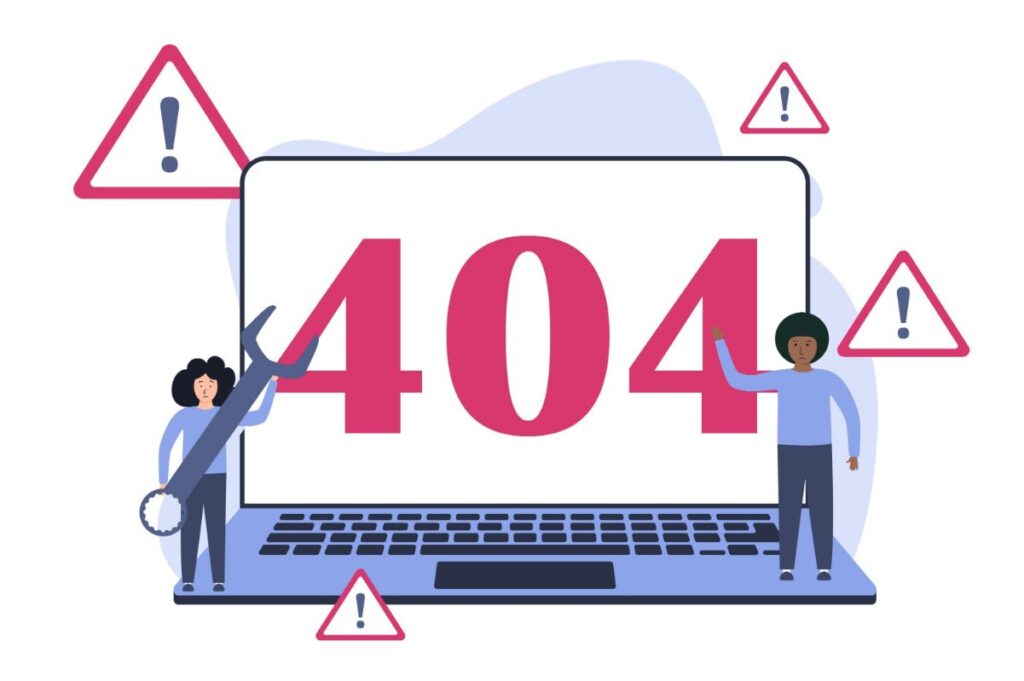Learn how to start affiliate marketing with no money in this step-by-step guide. Gain practical tips and strategies to kickstart your journey today!
What if I told you that the $16 billion affiliate marketing industry is accessible without spending a single dollar upfront? While many believe that starting affiliate marketing requires significant investment in websites, paid advertising, or premium tools, the reality is quite different. With the right strategy and dedication, you can build a profitable affiliate marketing business using nothing but free platforms and your creativity.
The landscape of affiliate marketing has evolved dramatically, with 16% of all ecommerce sales now generated through affiliate partnerships. This growth has created unprecedented opportunities for newcomers to enter the space without traditional barriers. Whether you’re a college student, stay-at-home parent, or anyone looking to create an additional income stream, this comprehensive guide will show you exactly how to start affiliate marketing with no money and build it into a sustainable business.
Understanding Affiliate Marketing Fundamentals

Affiliate marketing is a performance-based digital marketing strategy where you earn commissions by promoting other companies’ products or services. As an affiliate marketer, you act as a bridge between merchants and customers, receiving a unique affiliate link to track your referrals and attribute sales back to your promotional efforts.
The affiliate marketing system operates on a simple three-party model. The merchant provides the product and affiliate program, you promote their offerings through various marketing channels, and customers make purchases through your unique affiliate link. When a successful referral occurs, you receive a predetermined commission, which can range from a few percent to 50% or more of the sale value.
Commission structures vary significantly across different affiliate programs. Pay-per-sale models reward you with a percentage or fixed amount for each completed purchase. Pay-per-click arrangements provide smaller payments for driving traffic to the merchant’s website, regardless of whether a sale occurs. Recurring commission programs, particularly common with subscription-based services, offer ongoing payments as long as your referred customers remain active subscribers.
The beauty of affiliate marketing lies in its performance-based nature, creating a win-win scenario for all parties involved. Merchants only pay for actual results, affiliates earn money proportional to their efforts, and customers discover products through trusted recommendations. This model has contributed to the industry’s explosive growth, with global affiliate marketing spend projected to reach $16 billion by 2028.
Understanding these fundamentals is crucial for your affiliate marketing journey. Unlike traditional business models that require inventory, customer service, or product development, affiliate marketing allows you to focus solely on marketing and audience building. This makes it particularly attractive for those starting an affiliate marketing business with limited resources.
Choosing Your Profitable Niche
Selecting the right niche forms the foundation of successful affiliate marketing. Your niche should represent the intersection of your personal interests, market demand, and monetization potential. Starting with topics you’re genuinely passionate about ensures long-term motivation and authenticity in your content creation efforts.
The most profitable niches typically involve products or services that solve significant problems or fulfill strong desires. Business and finance niches often offer high commission rates, with software-as-a-service (SaaS) products frequently providing recurring commissions of $50-200 per referral. Health and wellness products tap into evergreen demand, while technology and gadgets appeal to early adopters willing to pay premium prices.
When evaluating potential niches, consider the competitive landscape carefully. While high competition often indicates viable market demand, oversaturated markets can make it challenging for newcomers to gain traction. Look for sub-niches within broader categories where you can establish authority and differentiate yourself from competitors.
Research niche demand using free tools and methods. Google Trends reveals search interest over time and can help identify growing or declining markets. Social media hashtag research on platforms like Instagram and TikTok provides insights into content engagement and audience size. Analyze competitor content to understand what resonates with audiences and identify content gaps you could fill.
Validate your niche choice by examining available affiliate programs and their commission structures. A niche with passionate audiences but limited monetization options won’t support your affiliate business goals. Conversely, niches with numerous high-quality affiliate programs but disengaged audiences present their own challenges.
Consider the customer lifetime value within your chosen niche. Products with higher price points or subscription models typically offer better earning potential than low-cost, one-time purchases. However, higher-ticket items may require more trust-building and sophisticated marketing approaches, which could extend your timeline to first sales.
Finding and Joining Affiliate Programs

Once you’ve identified your niche, the next step involves finding and evaluating affiliate programs that align with your audience’s needs and your revenue goals. Two primary paths exist for finding affiliate opportunities: direct partnerships with brands and joining affiliate networks that aggregate multiple programs.
Direct affiliate programs often offer higher commission rates and better terms since there’s no middleman taking a cut. Visit websites of brands you’d like to promote and look for “Affiliate,” “Partner,” or “Influencer” links, typically found in the footer. Many companies maintain dedicated affiliate program pages with application forms, commission details, and marketing resources.
Affiliate networks like ShareASale, ClickBank, and Commission Junction provide centralized platforms where you can browse and apply to multiple programs simultaneously. These networks handle tracking, reporting, and payments across all your affiliate partnerships, simplifying management but potentially offering lower commission rates than direct programs.
When evaluating affiliate programs, examine several key metrics beyond just commission rates. Cookie duration determines how long you’ll receive credit for a referral after someone clicks your affiliate link. Longer cookie periods (30-90 days) provide more opportunities for conversion, especially for higher-consideration purchases.
Earnings per click (EPC) data, when available, reveals how much other affiliates typically earn per 100 clicks. This metric helps predict your potential earnings based on your expected traffic volume. However, remember that your results may vary significantly based on your audience quality and promotional methods.
Review payment terms carefully, including minimum payout thresholds and payment schedules. Some programs require reaching $100 in commissions before issuing payments, while others pay out smaller amounts more frequently. Consider your cash flow needs when choosing between programs with different payment structures.
High-ticket affiliate programs deserve special consideration for their income potential. Promoting a $2,000 software solution with a 30% commission rate yields $600 per sale, requiring far fewer conversions than $20 products with similar commission percentages. However, high-ticket sales typically require more sophisticated content and longer sales cycles.
Join multiple programs within your niche to diversify your income sources and reduce dependency on any single merchant. This strategy also allows you to recommend the best solutions for different customer needs rather than forcing one-size-fits-all recommendations.
Selecting Free Traffic Sources

Success in affiliate marketing hinges on driving qualified traffic to your affiliate links, and fortunately, numerous free traffic sources can effectively support your affiliate marketing efforts without requiring paid advertising budgets. The key lies in focusing your initial efforts on one or two primary platforms where your target audience is most active.
Understanding platform-specific advantages helps inform your traffic source selection. Different platforms serve different content formats and audience behaviors, making some more suitable for your niche and content style than others.
YouTube Marketing Strategy
YouTube represents one of the most powerful free traffic sources for affiliate marketers, accounting for 82% of all internet traffic. The platform’s search functionality makes it excellent for capturing intent-driven traffic from people actively seeking information about products or solutions.
Creating tutorial videos, detailed product reviews, and comparison content performs exceptionally well on YouTube for affiliate marketing purposes. These content types naturally incorporate affiliate products while providing genuine value to viewers. Tutorial videos can demonstrate how to use products you’re promoting, while comparison videos help viewers understand different options within your niche.
Optimize your YouTube content for search engines by researching relevant keywords and incorporating them into video titles, descriptions, and tags. Use tools like YouTube’s search suggest feature to identify popular search terms within your niche. Video descriptions should include detailed explanations of the content along with your affiliate links and proper disclosure statements.
Place affiliate links strategically within video descriptions, clearly labeled and disclosed according to FTC guidelines. Consider creating dedicated review videos for high-commission products, as these tend to convert well when viewers are in research mode before making purchase decisions.
Monetize your YouTube channel through the platform’s ad revenue program once you meet eligibility requirements. This additional income stream can be reinvested into better equipment or content creation tools to improve your video quality and reach.
Instagram and Social Media Approach
Instagram’s visual nature makes it ideal for lifestyle, fashion, fitness, and product-focused affiliate marketing. With over 2 billion monthly active users, the platform offers substantial reach potential for organic content strategies.
Use Instagram Stories link stickers to share affiliate links with your followers, or utilize bio link tools like Linktree to showcase multiple affiliate partnerships in your profile. Stories provide a more casual, authentic way to share product recommendations compared to polished feed posts.
Create engaging visual content that authentically showcases affiliate products in use. Behind-the-scenes content, day-in-the-life posts, and genuine product experiences tend to perform better than obviously promotional content. User-generated content and testimonials can also effectively promote affiliate products while building trust with your audience.
Facebook’s 3 billion users make it the largest social media platform globally. Create dedicated pages for your affiliate marketing business or join relevant groups where you can share valuable content and build relationships. Facebook Groups, in particular, offer opportunities to engage with highly targeted audiences interested in your niche.
LinkedIn serves as an excellent platform for B2B affiliate marketing, particularly for promoting business tools, courses, and professional services. Share industry insights, case studies, and educational content that naturally incorporates relevant affiliate products.
Master X (formerly Twitter) by creating concise, eye-catching posts that drive curiosity and engagement. The platform’s 280-character limit requires distilling your message to its essence, making compelling headlines and hooks essential skills.
Creating High-Quality Content
Content creation forms the heart of successful affiliate marketing, serving as the vehicle through which you build trust, provide value, and naturally incorporate affiliate product recommendations. High-quality content that genuinely helps your audience will always outperform purely promotional material in terms of engagement and conversion rates.
Develop content that aligns with different stages of the customer journey. Educational content targets people in the awareness stage who are just discovering they have a problem. Comparison and review content serves those in the consideration stage who are evaluating solutions. Tutorial and implementation content helps people in the decision stage who are ready to take action.
Focus on search intent when creating content, ensuring your material matches what people are actually looking for. Review content should provide honest, detailed assessments of products including both pros and cons. Tutorial content should offer step-by-step guidance that helps users achieve specific outcomes. Comparison content should present fair evaluations of multiple options within a category.
Keyword research doesn’t require expensive tools when you’re starting your affiliate marketing journey. Use Google’s search suggestions and “People also ask” sections to identify relevant topics and questions within your niche. Analyze competitor content to understand what’s already ranking well and identify opportunities for creating better, more comprehensive resources.
Content consistency builds audience trust and search engine authority over time. Develop a content calendar that allows you to publish regularly without overwhelming yourself. Quality matters more than quantity, so focus on creating fewer pieces of exceptional content rather than rushing to publish frequently.
Repurpose your content across multiple platforms to maximize its reach and impact. A comprehensive blog post can become a YouTube video, Instagram carousel, Twitter thread, and email newsletter content. This approach helps you maintain consistency across platforms while adapting content to platform-specific formats and audience preferences.
Always prioritize providing genuine value over promoting affiliate products. Your audience will quickly recognize and reject content that exists solely to generate commissions. Instead, focus on solving real problems and answering genuine questions, naturally incorporating relevant affiliate products when they truly represent the best solutions.
Building Audience Trust and Engagement
Trust forms the foundation of successful affiliate marketing, and building it requires time, consistency, and authentic interactions with your audience. People buy from those they trust, making relationship-building a critical component of your affiliate marketing strategy.
Establish authenticity by sharing personal stories and experiences related to your niche. Discuss challenges you’ve faced, mistakes you’ve made, and lessons you’ve learned. This vulnerability helps your audience see you as a real person rather than just another marketer trying to sell them something.
Respond promptly and thoughtfully to comments, questions, and messages across all your platforms. Show genuine interest in helping your audience solve their problems, even when those conversations don’t directly lead to affiliate sales. This consistent helpfulness builds a reputation that pays dividends over time.
Create a mix of content that includes both promotional and non-promotional material. The 80/20 rule suggests that 80% of your content should provide value without selling anything, while 20% can include affiliate promotions. This balance helps maintain audience engagement while providing opportunities for monetization.
Build an email list using free tools and lead magnets related to your niche. Email marketing allows you to maintain direct contact with your audience without depending on social media algorithms. Create valuable resources like guides, checklists, or templates that people willingly exchange their email addresses to receive.
Use clear, compelling calls-to-action that guide your audience toward next steps without being pushy or manipulative. Explain why you’re recommending specific products and how they relate to the problems you’ve been discussing. Frame recommendations as helpful suggestions rather than sales pitches.
Integrate affiliate links naturally within your content rather than forcing them into unrelated contexts. The best affiliate promotions feel like natural extensions of helpful content rather than obvious attempts to generate commissions. Context and relevance matter more than frequency when it comes to affiliate link placement.
Tracking Performance and Optimization

Effective tracking and optimization separate successful affiliate marketers from those who struggle to generate consistent income. Understanding which strategies, content types, and traffic sources drive the best results allows you to focus your efforts on the most profitable activities.
Monitor key metrics through your affiliate program dashboards, which typically provide detailed information about clicks, conversions, and commission earnings. Most programs offer real-time reporting that helps you understand which promotions are performing well and which need adjustment.
Add UTM parameters to your affiliate links to track traffic sources more precisely in Google Analytics. This free tool provides insights into how visitors interact with your content and which traffic sources drive the highest-quality audiences. Understanding traffic source performance helps you allocate time and effort more effectively.
Identify your top-performing content and products by analyzing both engagement metrics and conversion rates. High engagement doesn’t always correlate with high conversions, so examine both sets of data to understand what resonates with your audience and what drives actual sales.
Track the correlation between different types of engagement and your affiliate sales. Some content types might generate high social media engagement but low conversions, while others might receive modest engagement but drive significant revenue. Understanding these patterns helps inform your content strategy.
Create tracking spreadsheets to monitor your affiliate marketing efforts across different programs and platforms. Include metrics like click-through rates, conversion rates, and earnings per piece of content. This comprehensive view helps identify trends and opportunities that might not be obvious when looking at individual platforms in isolation.
Test different approaches systematically to identify what works best for your audience. Try different headline styles, content formats, call-to-action phrases, and promotional approaches while measuring the impact on your key metrics. Small improvements in conversion rates can significantly impact your overall earnings.
Adjust your strategies based on data insights rather than assumptions or emotions. If certain content types consistently outperform others, create more of that content. If specific traffic sources drive higher-quality visitors, invest more time in those platforms. Let data guide your decision-making process.
Free Tools and Resources
Success in affiliate marketing doesn’t require expensive tools, especially when you’re starting your affiliate marketing business. Numerous free resources can support your content creation, audience research, and performance tracking needs effectively.
Canva Magic Design provides professional-quality visual content creation capabilities without design experience or software costs. Create social media posts, thumbnails, infographics, and other visual content that enhances your affiliate marketing efforts. The platform offers templates specifically designed for various social media platforms and content types.
Leverage Moz Keyword Explorer and Ubersuggest’s free tiers for keyword research and content planning. These tools help identify search terms your target audience uses and assess competition levels for different topics. Understanding keyword opportunities helps you create content that attracts organic traffic from search engines.
Utilize platform-specific analytics tools provided by YouTube, Instagram, Facebook, and other social networks. These free insights help you understand your audience demographics, content performance, and optimal posting times. Most platforms provide comprehensive analytics that rival expensive third-party tools.
Google Analytics offers detailed website traffic analysis for free, helping you understand visitor behavior, traffic sources, and conversion paths. Even if you’re primarily using social media platforms, understanding how traffic flows to merchant websites from your affiliate links provides valuable optimization insights.
Access free website builders and landing page creators when you’re ready to expand beyond social media platforms. WordPress.com, Wix, and other platforms offer free tiers that can support basic affiliate marketing websites. While these free versions have limitations, they provide excellent starting points for testing website-based strategies.
Explore AI tools for content creation and campaign optimization. ChatGPT and similar platforms can help with content ideation, headline creation, and even basic copywriting tasks. While human creativity and expertise remain essential, AI tools can significantly speed up content production processes.
Use free email marketing tools like Mailchimp’s free tier to begin building and nurturing your email list. Email marketing remains one of the highest-ROI marketing channels, and starting early helps you build this valuable asset as your audience grows.
Scaling Your Affiliate Business
Once you’ve established consistent results with your initial affiliate marketing strategy, scaling becomes the next logical step. Scaling involves systematically expanding successful approaches while maintaining the quality and authenticity that built your initial success.
Test new traffic channels once you’ve mastered your primary platform. If YouTube has been your main focus, experiment with Instagram, TikTok, or Pinterest while maintaining your YouTube presence. Diversifying traffic sources reduces dependency on any single platform and expands your overall reach.
Consider investing your earnings into paid advertising for faster growth once you understand which products and audiences convert best. Start with small budgets on platforms where you’ve already seen organic success, testing paid promotion of your highest-performing content to similar audiences.
Hire freelancers for content creation, editing, and social media management as your affiliate income grows. Platforms like Fiverr and Upwork offer access to skilled professionals who can help you produce more content while maintaining quality standards. This allows you to focus on strategy and relationship building while scaling content production.
Diversify your affiliate programs and products to reduce dependency on single sources of income. Promote products across different price points and categories within your niche, ensuring that changes to any individual program don’t significantly impact your overall earnings.
Reinvest your commissions into business growth rather than treating early earnings as immediate income. Purchase better equipment for content creation, invest in courses to improve your skills, or hire help to increase your content output. Reinvestment accelerates growth and helps build a more sustainable business.
Develop systems and processes that allow your affiliate marketing business to operate more efficiently. Create content templates, establish posting schedules, and develop standard operating procedures for common tasks. Systematization enables scaling without proportional increases in time investment.
Consider creating your own products or courses once you’ve built a substantial audience and established expertise in your niche. This transition from pure affiliate marketing to a hybrid model can significantly increase your earnings potential while providing additional value to your audience.
Common Mistakes to Avoid

Learning from common affiliate marketing mistakes can save you time, effort, and potential reputation damage. Understanding these pitfalls helps you build your affiliate business more effectively from the start.
Avoid promoting products you haven’t used or don’t genuinely believe in. Authentic recommendations based on personal experience carry much more weight with audiences than generic promotional content. Your reputation suffers when you promote poor-quality products, making future recommendations less effective.
Don’t spread your efforts too thin across multiple platforms initially. Focus on mastering one or two primary traffic sources before expanding to additional channels. Depth of engagement typically produces better results than surface-level presence across many platforms.
Never hide your affiliate relationships from your audience. Transparency builds trust and complies with FTC guidelines requiring clear disclosure of affiliate partnerships. Use phrases like “This post contains affiliate links” or “I may earn a commission if you purchase through my links” to maintain transparency.
Resist the temptation to focus solely on high-commission products without considering audience fit. A lower-commission product that perfectly solves your audience’s problems will often generate more sales and build more trust than an expensive product that doesn’t align with their needs.
Don’t expect overnight success or get discouraged by slow initial progress. Building an audience and establishing trust takes time, and most successful affiliate marketers see gradual growth over months rather than immediate results. Consistency and patience are essential virtues in affiliate marketing.
Avoid neglecting compliance with platform rules and regulations. Each social media platform has specific guidelines regarding affiliate links and promotional content. Violating these rules can result in account suspension or termination, destroying your accumulated audience and efforts.
Don’t ignore the importance of mobile optimization in your content and link sharing. Most social media consumption happens on mobile devices, so ensure your content displays well and your affiliate links work properly on smartphones and tablets.
FAQ
How long does it take to make money with affiliate marketing? Building an audience and generating consistent income typically takes 6-12 months of dedicated effort. Success depends on your niche, content quality, and consistency. Most successful affiliates see their first sales within 2-3 months, but significant income develops over time as you build trust and expand your audience.
Can I really make $100 per day with affiliate marketing? Yes, earning $100 daily is achievable by promoting multiple affiliate programs consistently with valuable content. This requires building a loyal audience of 10,000+ engaged followers and promoting products with commissions ranging from $10-50 per sale, depending on your conversion rates and traffic volume.
What’s the difference between affiliate networks and direct programs? Affiliate networks like ShareASale aggregate multiple brands in one platform with unified payments and tracking, while direct programs require individual applications to each brand. Networks offer convenience and easier management but may have lower commission rates than direct partnerships with individual companies.
Do I need to pay taxes on affiliate income? Yes, affiliate commissions are considered taxable income in most countries. Keep detailed records of earnings and expenses, and consult a tax professional for specific guidance. Many affiliates qualify for business deductions on content creation tools, internet costs, and educational materials.
How do I handle negative reviews or product complaints? Address concerns honestly and transparently, acknowledging any product limitations you’ve experienced. Provide balanced reviews mentioning both pros and cons to maintain credibility. If a product consistently disappoints your audience, stop promoting it to preserve trust and your reputation as a reliable source of recommendations.


